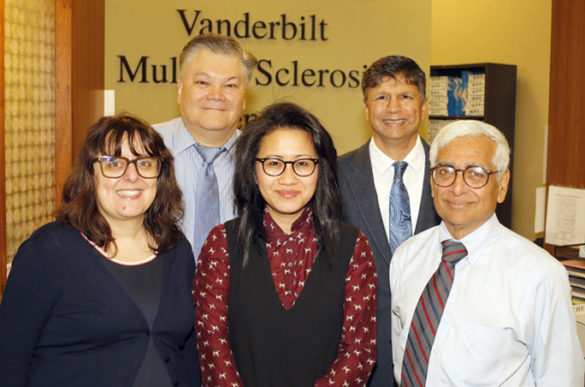
A drug commonly prescribed for Crohn’s disease and rheumatoid arthritis is also effective for treating neurosarcoidosis, according to new research led by Vanderbilt neurologists.
Remicade (infliximab) resulted in clinical improvement in 77.3 percent of patients and spurred complete recovery in 28.8 percent of patients. The positive responses were also evidenced on MRI scans that showed reduction of granulomas in the brain and nervous system that are characteristic of the condition.
Neurosarcoidosis is a complication of sarcoidosis, a disease of unknown cause that occurs when collections of inflammatory cells occur in different parts of the body.
The study published recently in Neurology is one of the first to show the effectiveness of Remicade for the rare brain disorder.
While placebo-controlled double blind studies are considered the gold standard in determining the efficacy of medical treatments, this study is significant because it is a meticulously done retrospective study of a large cohort in a field that lacks much literature.
Steroids have until now been considered the mainstay treatment.
“You cannot use steroids too much for too long due to the toxicities,” said Siddharama Pawate, MD, the senior author who spearheaded the multicenter study.
Other authors include five colleagues at the Vanderbilt Multiple Sclerosis Clinic and Infusion Center, which has been designated a neurosarcoidosis specialty clinic by the Foundation for Sarcoidosis Research.
Neurosarcoidosis often mimics other neurological diseases, such as multiple sclerosis, which results in misdiagnoses.
“It’s rare because it is underrecognized — that’s the way we put it,” said Subramaniam Sriram, MBBS, William C. Weaver III Professor of Neurology.
“We want to make people more aware about neurosarcoidosis, not only to our patients, but to the entire community.”
The Vanderbilt clinic treats about 200 people with the disorder, one of the largest patient cohorts in the country.
“Our clinic sees patients whose clinical presentations mimic those of multiple sclerosis. We believe that since the presentation of neurosarcoidosis is protean, neurosarcoidosis is likely to be an unrecognized clinical entity,” Sriram said.
In 2015, David Clifford, MD, with Washington University in St. Louis, reached out to other clinics that see large volumes of neurosarcoidosis patients to form joint research endeavors.
“One of the first things we did as part of the neurosarcoid consortium was look at the treatment of neurosarcoidosis,” Pawate said. “There were no clinical trials or anything to guide the treatment. So treatment was based on the individual experience of the treating clinicians.”
The Remicade study tracked the outcomes of 66 patients from six academic medical centers with Vanderbilt having the most patients participating. MRI scans indicated favorable treatment response in 82.1 percent of patients.
Forty percent were able to discontinue steroids, while 27 percent could be maintained on low-lose prednisone or an equivalent.
Michael Bradshaw, MD, who completed his residency in Neurology at Vanderbilt in June, is co-first author of the study.
The Vanderbilt Multiple Sclerosis Clinic and Infusion Center has grown from two MS neurologists in 2009 to six fellowship-trained neurologists that specialize in neuroimmunoloty.
Pawate has expanded the expertise of the center beyond MS and has published on other less common conditions including autoimmune encephalitis, Susac syndrome, leukodystrophies, longitudinally extensive myelitis and Erdheim-Chester disease.












